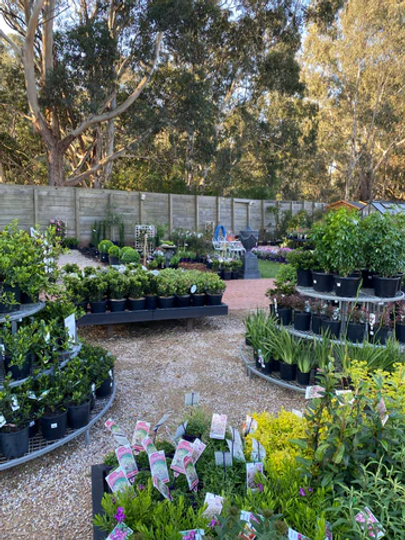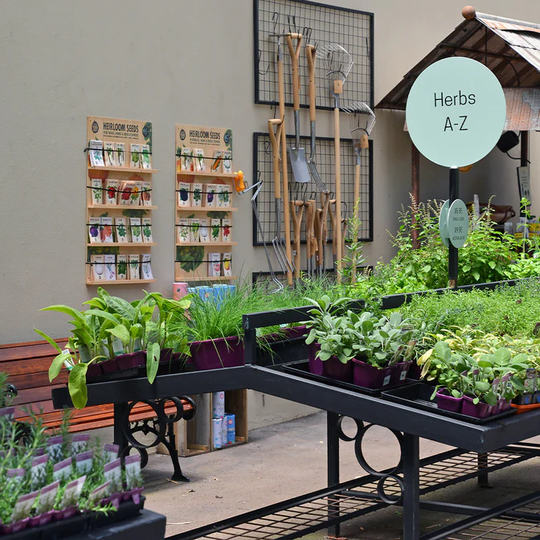Edible landscaping combines beauty with practicality, transforming your garden into a vibrant, productive space where you can grow your own food. This approach merges aesthetics with functionality, creating a garden that is not only visually appealing but also yields fresh produce. Whether you're an experienced gardener or just getting started, this guide will help you design a garden that’s both beautiful and bountiful.
Why Choose Edible Landscaping?
Edible landscaping is the perfect way to combine the joys of gardening with sustainability and self-sufficiency. Instead of focusing solely on ornamental plants, edible landscaping incorporates fruits, vegetables, and herbs, allowing you to grow food while maintaining a stunning garden. According to Lisette from Sydney Wildflower Nursery, “Edible native plants can be just as beautiful as non-edible ornamental plants with the added benefit of the joy you get from growing your own food.”
Incorporating edible plants not only adds a functional element to your garden but also promotes healthier eating habits. As Nick Harris from Vegepod points out, “Integrating edible plants like herbs into traditional gardens has many benefits. Not only do they enhance the sensory experience with different textures and smells, but they also promote healthier eating and offer educational value about food sourcing and sustainability.”

Best Edible Plants for Beginners
Starting an edible landscape doesn’t need to be overwhelming, especially for beginners. The key is to choose plants that are easy to grow and thrive in a variety of conditions. For those just starting out, Lisette from Sydney Wildflower Nursery recommends native edible plants such as Austromyrtus dulcis (Midgen Berry), Backhousia citriodora (Lemon Myrtle), Atriplex nummularia (Old Man Saltbush), and Alpinia caerulea (Native Ginger). These plants not only enhance the beauty of your garden but also provide edible fruits and leaves.
Kat from Botanica Lane shares additional insight into native edible plants that are both beautiful and practical. “Finger limes are a wonderful native citrus, perfect for seafood, oysters, and cocktails, with beautiful foliage that adds elegance to any garden,” she says. Another beginner-friendly plant is the Syzygium luehmannii (Lilly Pilly), known for its tart, cranberry-like berries that are delicious in salads or desserts. “I grew up eating these berries, and they bring a delightful flavour to your plate while attracting birds to your garden,” Kat adds.
For those who prefer more familiar garden staples, Nick Harris from Vegepod suggests lettuces, radishes, and cherry tomatoes. “For beginners, quick and easy options like lettuces, radishes, and cherry tomatoes are great. They grow fast and are rewarding.”

Designing an Aesthetically Pleasing Edible Garden
The beauty of edible landscaping lies in its ability to blend function with aesthetics. You can design a productive garden that looks just as beautiful as any ornamental landscape. The trick is to combine plants with different heights, colours, and textures to create a layered, visually dynamic space.
Lisette from Sydney Wildflower Nursery recommends grouping plants with similar needs together, layering them with a combination of trees, shrubs, and ground covers. “Grouping plants together with similar needs, layering with a combination of trees, mid-story and ground covers, and using foliage contrast are key design strategies,” she says.
For example, you can layer your garden by planting fruit trees like citrus at the top, mid-level shrubs such as native ginger or saltbush, and ground covers like thyme or chamomile. This approach not only maximises the use of space but also creates a balanced, harmonious look.
Additionally, using mass plantings of smaller plants like Arthropodium milleflorum (Vanilla Lily) can create a striking visual impact, while regular pruning and shaping will help keep your plants healthy and well-formed.
Kat from Botanica Lane emphasises the importance of planning before planting. “First, take your time with it,” she advises. “Know your budget and plan your garden layout. Don’t rush; edible landscaping is something you want to enjoy over time.” Kat also suggests talking to local nurseries or horticulturalists to ensure the plants you choose are appropriate for your garden’s size and your ability to maintain them.

Incorporating Ground Covers for Functionality and Beauty
Ground covers play a crucial role in edible landscaping by protecting the soil, preventing weeds, and adding visual interest. Jake Moorehead from The Greenery highlights thyme as a versatile and low-maintenance edible ground cover. “One of the best edible ground covers is thyme. It has deep green leaves and a pleasant scent. Plus, it’s pretty resilient. You can even walk through it, and it releases a great smell when you brush past it.”
Another excellent option is chamomile, which adds charm and functionality to your garden. “Chamomile is another excellent ground cover, often used as a lawn substitute. It produces lovely daisy-like flowers and is perfect for adding both beauty and utility to an edible garden,” Jake adds.
Both thyme and chamomile can replace traditional grass or fill empty spaces between larger plants, adding beauty while also providing culinary benefits.

Climbing Plants for Vertical Interest
To maximise your garden space, especially in smaller areas, climbing plants are an excellent addition. These plants can grow vertically, creating a lush and dynamic garden design. They can be trained along trellises or fences, adding both height and structure to your landscape.
“I love using climbing edible plants like raspberries and tomatoes. You can stake them or run them up fences, and they create really nice effects. Even though they're functional, they can still look quite ornamental,” says Jake Moorehead. Climbing plants like beans, raspberries, and tomatoes not only provide a harvest but also add a visually striking element to your garden.
Herbs and Native Edibles for Added Flavour
Herbs are the backbone of any edible garden, and they can easily be integrated into your landscape design. Nick Harris from Vegepod points out that herbs bring a sensory experience to your garden. “Integrating edible plants like herbs into traditional gardens has many benefits. Not only do they enhance the sensory experience with different textures and smells, but they also promote healthier eating.”

Kat from Botanica Lane suggests starting with rosemary, mint, parsley, and basil. “Rosemary prostrata is a great option for beginners. It’s easy to grow, and you can plant it near a BBQ for easy harvesting during cooking.” She also recommends keeping mint in a separate pot, as it can become invasive.
Additionally, Kat encourages gardeners to explore less common edible natives like the wattle seed and lemon myrtle. “The wattle seed can be used to make flour for desserts, and lemon myrtle leaves can be dried and used in cooking. These plants are not only beautiful but also provide unique flavours for your kitchen.”

Practical Tips for Edible Landscaping Success
Edible landscaping requires careful planning and an understanding of plant needs to ensure your garden thrives. Here are some expert tips to help you get started:
- Group plants by similar needs: Position plants with the same water and sunlight requirements together to make maintenance easier.
- Layer plants for visual interest: Use trees, shrubs, and ground covers in layers to create a garden that looks lush and full.
- Incorporate ground covers: Edible ground covers like thyme and chamomile can help retain moisture and prevent weeds, while also adding an extra layer of productivity to your garden.
- Use climbing plants to save space: Vertical gardening with climbing plants like beans or tomatoes can add height and depth to your landscape without taking up much room.
- Don’t forget to prune: Regular pruning will keep your plants healthy and ensure they maintain a tidy, attractive shape.
Edible landscaping offers a rewarding way to combine beauty with practicality in your garden. By selecting easy-to-grow plants like thyme, chamomile, and cherry tomatoes, and following expert advice on design and maintenance, you can create a garden that is both functional and visually appealing. Whether you’re layering native plants or incorporating climbing vines, edible landscaping makes it possible to enjoy a thriving garden that feeds both the body and the soul. With insights from experts like Kat from Botanica Lane, Lisette at Sydney Wildflower Nursery, Jake Moorehead from The Greenery, and Nick Harris from Vegepod, you now have the tools and knowledge to create a successful edible landscape. Start small, experiment with different plants, and watch your garden transform into a space that’s as nourishing as it is beautiful.